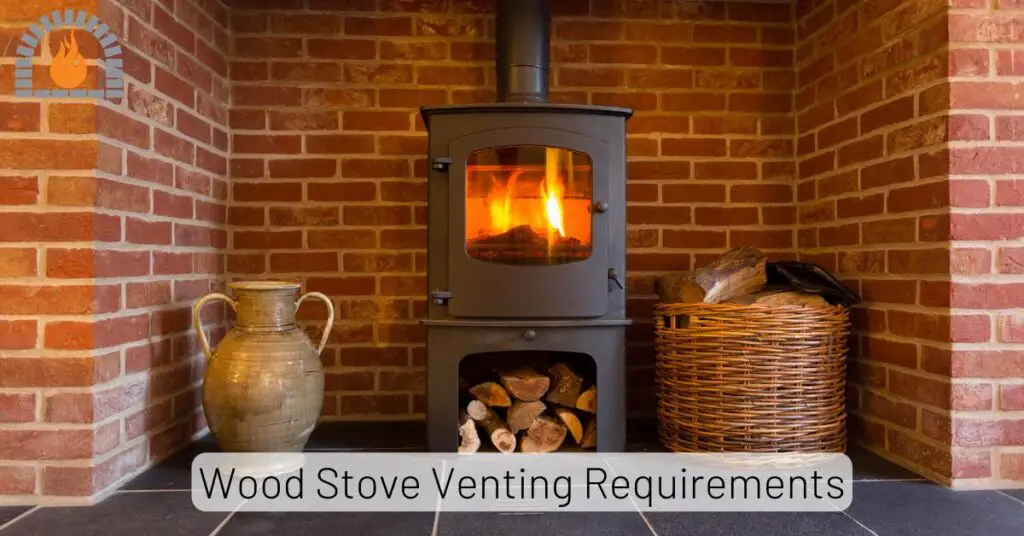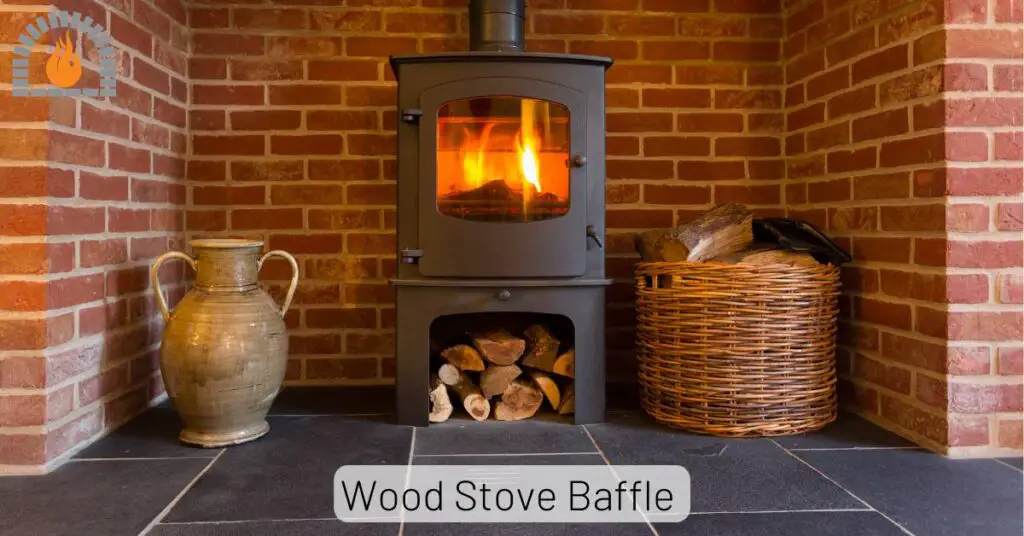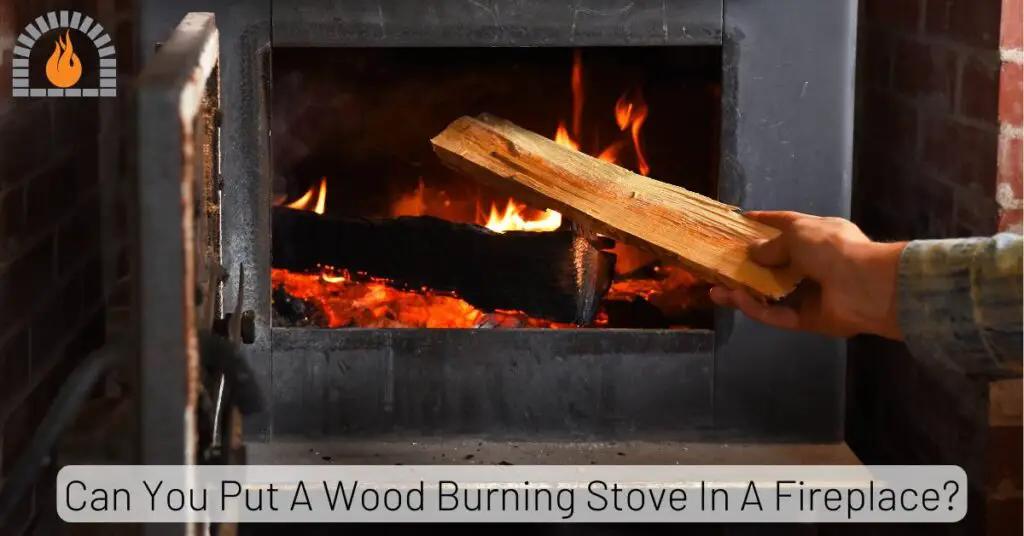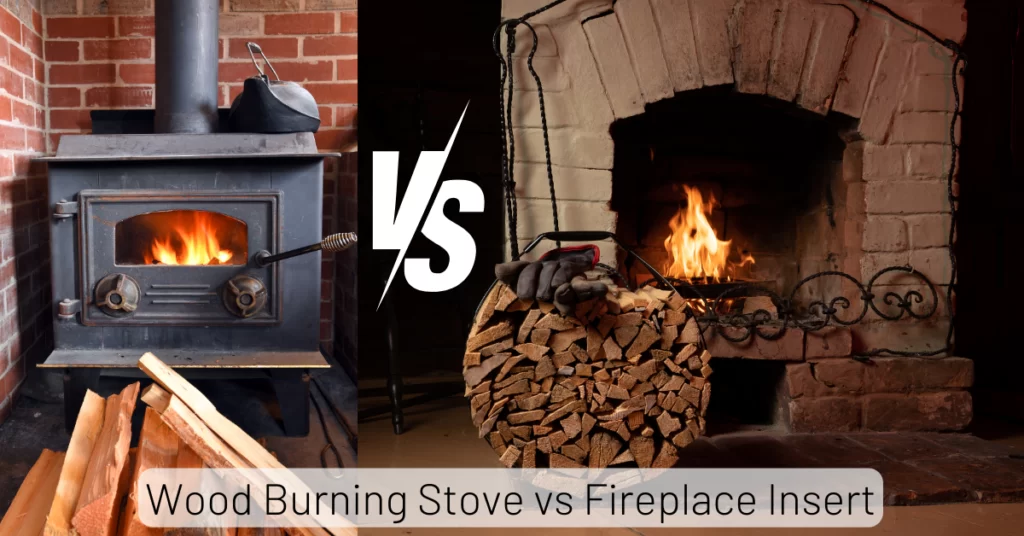The Mama Bear Wood Stove is a classic, high-efficiency wood-burning stove originally manufactured by Fisher Stoves in the 1970s and 1980s. Known for its exceptional heating capacity, durability, and timeless design, the Mama Bear model can heat up to 2,000 square feet of living space with its double-walled construction and airtight design.
As one of the most sought-after vintage wood-burning stoves on the market today, the Mama Bear Wood Stove offers homeowners an effective heating solution that combines traditional craftsmanship with practical functionality. This comprehensive guide will walk you through everything you need to know about the Mama Bear Wood Stove, including its advantages, limitations, installation requirements, and troubleshooting common issues.
Key Takeaways
- The Mama Bear Wood Stove is a vintage model from Fisher Stoves, renowned for its heating capacity and durability
- These stoves can heat spaces up to 2,000 square feet when properly installed and maintained
- Original Mama Bear stoves are no longer manufactured but are available on the secondary market
- Installation requires proper clearances, a suitable chimney system, and compliance with local regulations
- Regular maintenance including cleaning, gasket replacement, and inspection is essential for safe operation
- Common issues include poor draft, glass door sooting, and deteriorated firebricks, all of which can be addressed with proper troubleshooting
What is a Mama Bear Wood Stove?
The Mama Bear Wood Stove is a specific model of wood-burning stove produced by Fisher Stoves, a company founded by Bob Fisher in the 1970s. As part of the “Bear Series” which included smaller (Papa Bear) and larger (Baby Bear) models, the Mama Bear struck a balance between size and heating capacity, making it one of the most popular models in the lineup.
What sets the Mama Bear Wood Stove apart from other wood stoves is its robust construction and efficient design. These stoves were built with heavy-gauge steel, featuring double walls for improved combustion and heat retention.
The airtight design allowed for better control of the burn rate, making it more efficient than many of its contemporaries.
The Mama Bear Wood Stove typically features:
- A large firebox capable of accommodating logs up to 24 inches in length
- A glass door for viewing the fire
- An air wash system to keep the glass clean
- Baffle plates for more complete combustion
- Adjustable air controls for regulating the burn rate
Today, the Mama Bear Wood Stove is considered a vintage appliance, and while Fisher no longer produces new models, original stoves are highly sought after in the secondary market for their proven performance and durability.
Mama Bear Wood Stove Key Features
- Double-Walled Construction: The Mama Bear Wood Stove features a double-walled design that improves combustion efficiency and heat retention. The outer wall provides safety by reducing the external temperature, while the inner wall withstands the intense heat of the firebox.
- Airtight Design: Unlike older wood stoves that lost much of their heat through uncontrolled air intake, the Mama Bear’s airtight design allows users to control the burn rate precisely, leading to longer burn times and better fuel efficiency.
- Large Firebox: With a capacity to hold logs up to 24 inches in length, the Mama Bear Wood Stove offers extended burn times, reducing the need for frequent reloading.
- Glass Door: The cast iron door with a ceramic glass window allows users to enjoy the ambiance of the fire while monitoring the combustion process.
- Air Wash System: This feature helps keep the glass door clean by directing a flow of air across the glass, reducing soot buildup.
- Baffle Plates: Internal baffle plates create a longer path for smoke and gases, allowing for more complete combustion and improved efficiency.
- Adjustable Air Controls: Primary and secondary air controls allow users to regulate the intensity and duration of the fire.
Technical Specifications
| Specification | Detail |
|---|---|
| Heating Capacity | Up to 2,000 square feet |
| Firebox Volume | Approximately 2.5 cubic feet |
| Maximum Log Length | 24 inches |
| Fuel Type | Cordwood |
| Material | Heavy-gauge steel with cast iron door |
| Weight | Approximately 400 pounds |
| Flue Size | 6 or 8 inches (depending on model year) |
| Efficiency | Approximately 60-65% (original design) |
| Emissions | Not EPA certified (predates current standards) |
| Dimensions | Approximately 28″W x 24″D x 28″H |
It’s important to note that specifications may vary slightly depending on the specific year of manufacture, as Fisher made minor adjustments to the design over the production years.
Pros of the Mama Bear Wood Stove
The Mama Bear Wood Stove has earned its reputation as a reliable heating appliance for several reasons. Here are the key advantages that have made it a favorite among wood heating enthusiasts:
1) Exceptional Heating Capacity
One of the most significant advantages of the Mama Bear Wood Stove is its impressive heating capacity. When properly installed and operated, it can effectively heat spaces up to 2,000 square feet, making it suitable for most homes. The stove’s radiant heat output creates a comfortable, even warmth that many users prefer over forced-air systems.
2) Durability and Longevity
Built with heavy-gauge steel and quality craftsmanship, Mama Bear stoves are known for their durability. Many original units from the 1970s and 1980s are still in operation today, a testament to their robust construction. Unlike many modern appliances that may need replacement after a decade or so, a well-maintained Mama Bear Wood Stove can last a lifetime.
3) Fuel Independence and Cost Savings
With a Mama Bear Wood Stove, homeowners can reduce their dependence on fossil fuels and utility companies. For those with access to affordable or free firewood, the cost savings can be substantial. Even when purchasing wood, the heating cost per BTU is often significantly lower than oil, propane, or electric heat.
4) Emergency Heating Capability
During power outages, the Mama Bear Wood Stove continues to function, providing reliable heat when other systems fail. This feature is particularly valuable in areas prone to winter storms or unreliable power grids.
5) Aesthetic Appeal
The classic design of the Mama Bear Wood Stove adds a rustic, cozy element to any home. The sight of a crackling fire through the glass door creates a warm, inviting atmosphere that many homeowners find appealing.
6) Simple Operation and Maintenance
Compared to modern pellet stoves or gas appliances, the Mama Bear Wood Stove has a straightforward design with fewer complex components. This simplicity translates to easier operation and maintenance, with most tasks within the capability of a handy homeowner.
7) Long Burn Times
Thanks to its airtight design and large firebox, the Mama Bear Wood Stove can provide heat for extended periods. Depending on the wood type and damper settings, users can achieve burn times of 6-8 hours or more, allowing for overnight heating without reloading.
Cons of the Mama Bear Wood Stove
While the Mama Bear Wood Stove offers numerous benefits, it’s important to consider its limitations as well. Understanding these drawbacks will help you make an informed decision about whether this vintage stove is right for your home.
1) Not EPA Certified
Perhaps the most significant drawback of the original Mama Bear Wood Stove is that it does not meet current EPA emissions standards. Manufactured before these regulations were implemented, these stoves produce more particulate matter than modern certified appliances.
This can be a concern in areas with strict air quality regulations or for environmentally conscious users.
2) Lower Efficiency Compared to Modern Stoves
While efficient for its time, the Mama Bear Wood Stove’s efficiency of approximately 60-65% falls short of modern EPA-certified stoves, which often achieve efficiencies of 75-85%. This means more wood is required to produce the same amount of heat, and more heat is lost up the chimney.
3) Installation Requirements
The Mama Bear Wood Stove requires significant clearances from combustible materials, typically 36 inches from walls and other flammable surfaces. This can limit placement options and may reduce usable floor space. Additionally, the stove’s weight (around 400 pounds) necessitates a sturdy, non-combustible floor pad and may require structural reinforcement in some installations.
4) No Longer Manufactured
Since Fisher Stoves ceased production, replacement parts can be challenging to find. While some components can be fabricated or adapted from other stoves, certain proprietary parts may require extensive searching or custom fabrication.
5) Insurance and Code Compliance Issues
Some insurance companies may have concerns about insuring homes with non-EPA certified wood stoves, particularly in areas with strict regulations. Additionally, local building codes may prohibit the installation of non-compliant appliances in new construction or major renovations.
6) Manual Operation
Unlike modern thermostatically controlled stoves, the Mama Bear requires manual adjustment of air controls to maintain optimal temperatures. This demands more attention from the user and can result in temperature fluctuations if not carefully managed.
7) Creosote Buildup
The lower combustion temperatures and less complete burning in older stoves like the Mama Bear can lead to increased creosote buildup in the chimney. This necessitates more frequent chimney cleaning to prevent the risk of chimney fires.
Installation Requirements
Proper installation of a Mama Bear Wood Stove is crucial for both safety and performance. Following these guidelines will help ensure your stove operates efficiently and safely.
Location and Clearances
Selecting the right location for your Mama Bear Wood Stove is the first step in the installation process. Consider the following:
- Floor Protection: The stove must be placed on a non-combustible floor pad extending at least 18 inches beyond all sides of the stove. This pad can be made of brick, stone, tile, or an approved manufactured hearth pad.
- Wall Clearances: The Mama Bear Wood Stove requires minimum clearances of 36 inches from combustible walls. This distance can be reduced with proper heat shields, but never less than what’s specified in the original installation manual.
- Corner Placement: Placing the stove in a corner can reduce clearances to 24 inches from each wall, provided the corner is properly protected with non-combustible materials.
- Ceiling Clearances: Maintain at least 84 inches from the top of the stove to the ceiling. If installing close to a ceiling, proper heat shields are required.
Chimney and Venting Requirements
Proper venting is essential for safe and efficient operation of your Mama Bear Wood Stove:
- Chimney Height: The chimney must extend at least 3 feet above the point where it exits the roof and at least 2 feet above any part of the roof within 10 feet horizontally.
- Chimney Size: The Mama Bear Wood Stove typically requires a 6 or 8-inch chimney, depending on the model year. Always match the chimney size to the stove’s flue collar.
- Chimney Type: A Class A insulated chimney is required. Masonry chimneys must be lined with a stainless steel liner if not already in excellent condition.
- Connector Pipe: Use 24-gauge or heavier steel pipe connecting the stove to the chimney. Maintain proper clearances (typically 18 inches) from combustible materials.
Hearth and Floor Protection
The area around your Mama Bear Wood Stove must be properly protected:
- Hearth Extension: A non-combustible hearth extension must extend at least 16 inches in front of the stove door and 8 inches beyond each side of the stove.
- Thermal Protection: The floor protection must have an R-value of at least 1.0 (or equivalent thermal resistance) to protect underlying combustible materials.
Permits and Inspections
Before installing your Mama Bear Wood Stove:
- Check Local Regulations: Contact your local building department to understand specific requirements for wood stove installation in your area.
- Obtain Permits: Most jurisdictions require permits for wood stove installations. Ensure you have the necessary permits before beginning work.
- Schedule Inspections: Arrange for required inspections during and after installation to ensure compliance with local codes and safety standards.
Professional Installation Considerations
While experienced DIYers may be capable of installing a Mama Bear Wood Stove, professional installation is recommended for several reasons:
- Safety Assurance: Professional installers are familiar with safety requirements and best practices.
- Code Compliance: Professionals ensure the installation meets all local and national codes.
- Warranty Considerations: Some components may require professional installation to maintain warranty coverage.
- Insurance Requirements: Your insurance company may require professional installation for coverage.
Operation and Maintenance
Proper operation and regular maintenance are essential for the safe and efficient performance of your Mama Bear Wood Stove. Follow these guidelines to get the most out of your stove while ensuring years of reliable service.
Starting and Maintaining a Fire
Getting a good fire going in your Mama Bear Wood Stove and maintaining it properly is key to efficient heating:
- Preparation: Before lighting, ensure the stove is clean, the ash drawer is empty, and the air controls are fully open.
- Fire Starting: Begin with crumpled newspaper or dry kindling at the bottom of the firebox. Arrange small, dry pieces of wood loosely over the kindling in a teepee or crisscross pattern for good airflow.
- Lighting: Light the newspaper and close the door slightly, leaving it ajar for a few minutes to establish a good draft. Once the kindling is burning well, close the door fully.
- Adding Larger Wood: Once the kindling and small wood are burning vigorously, add larger pieces of seasoned wood. Avoid overloading the firebox.
- Controlling the Burn: Once the larger wood is burning well (usually after 20-30 minutes), you can begin adjusting the air controls to achieve your desired burn rate. Start by partially closing the primary air control, then adjust as needed to maintain the desired temperature.
Wood Selection and Storage
The type and condition of wood you burn significantly impact your stove’s performance and efficiency:
- Wood Species: Hardwoods such as oak, maple, hickory, and ash are preferred for their higher density and longer burn times. Softwoods like pine can be used for kindling or shorter, hotter fires.
- Moisture Content: Wood should be properly seasoned (dried) to a moisture content of 20% or less. Freshly cut “green” wood contains up to 50% moisture, which reduces efficiency and increases creosote buildup.
- Seasoning Process: Split wood and stack it off the ground in a sunny, breezy location. Cover the top but leave the sides exposed to air circulation. Most hardwoods require 6-12 months of proper seasoning.
- Storage: Keep seasoned wood protected from rain and snow but with adequate air circulation to prevent mold growth.
Regular Maintenance Tasks
Consistent maintenance is crucial for the longevity and safe operation of your Mama Bear Wood Stove:
- Ash Removal: Remove ashes regularly, but maintain a small bed (about 1 inch) to help insulate the bottom of the firebox and make starting new fires easier. Always place ashes in a metal container with a tight-fitting lid and store them outdoors away from combustible materials until completely cold.
- Glass Cleaning: Clean the glass door regularly using a specialized wood stove glass cleaner or a paste made from ash and water. Avoid using abrasive materials that could scratch the glass.
- Gasket Inspection and Replacement: Check door and window gaskets annually for wear and deterioration. Replace if they appear compressed, brittle, or damaged. A simple dollar bill test can help determine if gaskets need replacement: close the door on the bill and try to pull it out. If it slides out easily, the gasket needs replacement.
- Baffle and Firebrick Inspection: Regularly inspect the internal baffles and firebricks for damage. Replace any cracked or severely deteriorated bricks to maintain proper insulation and combustion efficiency.
- Chimney Cleaning: Have your chimney professionally cleaned at least once per year, or more frequently if you use the stove regularly. Creosote buildup is a leading cause of chimney fires.
Annual Maintenance Checklist
Perform these maintenance tasks annually before the heating season begins:
- Thoroughly clean the entire stove interior, removing all ash and soot
- Inspect and replace damaged gaskets
- Check firebricks and replace if necessary
- Inspect and clean the catalytic combustor (if equipped)
- Examine the door latch and hinges for proper operation
- Check all air controls for free movement
- Have the chimney and connector pipe professionally cleaned and inspected
- Verify that floor protection and wall clearances are still adequate
- Test smoke and carbon monoxide detectors
Troubleshooting Performance Issues
If your Mama Bear Wood Stove isn’t performing as expected, consider these common issues and solutions:
- Poor Draft: Check for chimney obstructions, ensure the chimney is warm enough, verify adequate combustion air in the room, and check that the stovepipe is properly installed.
- Excessive Creosote: Burn only seasoned wood, maintain proper combustion temperatures, avoid smoldering fires, and ensure proper draft.
- Glass Sooting: Adjust air controls to maintain hotter fires, check for worn gaskets, verify the air wash system is functioning, and use dry wood.
- Short Burn Times: Use larger pieces of hardwood, ensure wood is properly seasoned, adjust air controls for a slower burn, and check for air leaks around doors and gaskets.
Mama Bear Wood Stove Troubleshooting
Even with proper maintenance, you may encounter issues with your Mama Bear Wood Stove. This section addresses common problems and their solutions to help you keep your stove running safely and efficiently.
Poor Draft and Smoking Issues
A poor draft can cause smoke to spill into your room instead of going up the chimney. This is not only unpleasant but also dangerous due to carbon monoxide exposure.
Symptoms:
- Smoke spills into the room when opening the door or starting a fire
- Fire struggles to start or maintain combustion
- Excessive smoke visible from the chimney
Causes and Solutions:
- Cold Chimney: A cold chimney can prevent proper draft establishment.
- Solution: Pre-warm the chimney by lighting a rolled-up newspaper and holding it near the flue opening before starting your main fire.
- Chimney Obstruction: Bird nests, leaves, or creosote buildup can block the chimney.
- Solution: Have the chimney professionally cleaned and inspected. Install a chimney cap to prevent future blockages.
- Insufficient Chimney Height: A chimney that doesn’t extend high enough above the roofline may not draft properly.
- Solution: Ensure the chimney extends at least 3 feet above where it exits the roof and 2 feet above any part of the roof within 10 feet horizontally.
- Negative Air Pressure: Modern airtight homes can create negative pressure that works against chimney draft.
- Solution: Crack open a window near the stove to provide makeup air. Consider installing an outside air kit for the stove.
- Competing Vents: Other exhaust fans or vents can create negative pressure issues.
- Solution: Turn off exhaust fans (bathroom, kitchen, dryer) when starting and operating the wood stove.
Overfiring and Excessive Heat
While the Mama Bear Wood Stove is built to handle high temperatures, consistently overfiring can damage the stove and create a fire hazard.
Symptoms:
- Stove body glows red or orange
- Chimney connector pipe glows red
- Extremely fast wood consumption
- Unusually high room temperatures
Causes and Solutions:
- Air Controls Left Fully Open: Running the stove with air controls fully open for extended periods can cause overfiring.
- Solution: Once the fire is well-established, adjust the air controls to maintain a moderate burn rate. Never leave the stove unattended with air controls fully open.
- Overloading the Firebox: Too much wood can generate excessive heat.
- Solution: Load the firebox according to the manufacturer’s recommendations, typically filling it no more than halfway.
- Burning Inappropriate Materials: Trash, treated wood, or other inappropriate materials can burn too hot.
- Solution: Burn only seasoned natural wood in your Mama Bear Wood Stove.
- Damaged Baffle or Firebricks: Missing or damaged internal components can expose the stove body to excessive heat.
- Solution: Inspect and replace damaged baffles or firebricks as needed.
Glass Door Sooting and Blackening
One of the joys of a wood stove is watching the flames through the glass door. When this glass becomes blackened with soot, it diminishes the experience and may indicate combustion issues.
Symptoms:
- Glass door becomes blackened with soot
- Difficulty seeing the fire through the glass
- Rapid buildup of creosote on the glass
Causes and Solutions:
- Low Burn Temperatures: Operating the stove at low temperatures for extended periods can cause incomplete combustion and soot formation.
- Solution: Periodically run the stove at a higher temperature with air controls more open to burn off accumulated deposits.
- Wet or Unseasoned Wood: Wood with high moisture content produces more smoke and less heat, leading to soot formation.
- Solution: Use only properly seasoned wood with moisture content below 20%.
- Faulty Air Wash System: The air wash system directs air across the glass to keep it clean. If this system isn’t functioning properly, soot will accumulate.
- Solution: Check for blocked air wash ports and clean them if necessary. Ensure the air controls are properly adjusted to allow sufficient air flow.
- Worn Door Gaskets: Leaky door gaskets can disrupt the proper air flow needed for the air wash system.
- Solution: Test and replace worn gaskets as needed.
Damaged Firebricks and Baffles
The internal components of your Mama Bear Wood Stove, particularly the firebricks and baffles, are subject to intense heat and deterioration over time.
Symptoms:
- Visible cracks or chunks missing from firebricks
- Damaged or missing baffle plates
- Reduced heating efficiency
- Excessive heat on the stove’s exterior
Causes and Solutions:
- Normal Wear and Tear: Over time, firebricks and baffles naturally deteriorate from repeated heating and cooling cycles.
- Solution: Inspect these components annually and replace as needed. Most firebricks are relatively inexpensive and straightforward to replace.
- Thermal Shock: Rapid temperature changes can cause firebricks to crack.
- Solution: Avoid drastic temperature changes. Allow the stove to heat up and cool down gradually.
- Physical Damage: Moving logs or tools inside the firebox can damage firebricks.
- Solution: Be careful when loading wood and adjusting the fire to avoid hitting the firebricks.
- Moisture Damage: Moisture can cause firebricks to deteriorate prematurely.
- Solution: Keep the stove dry when not in use, especially during humid months. Consider using a dehumidifier in areas with high humidity.
Door and Gasket Issues
A proper seal is essential for controlling the combustion process in your Mama Bear Wood Stove. Door and gasket problems can affect both performance and safety.
Symptoms:
- Difficulty latching the door
- Visible gaps between the door and stove body
- Air whistling or hissing around the door
- Poor control of burn rate
- Excessive fuel consumption
Causes and Solutions:
- Worn or Damaged Gaskets: Over time, the fiberglass gaskets that seal the door can become compressed, brittle, or damaged.
- Solution: Replace worn gaskets with new high-temperature fiberglass rope. This is a relatively simple and inexpensive repair.
- Warped Door: Intense heat over many years can cause the door to warp, preventing a proper seal.
- Solution: Minor warping can sometimes be corrected by adjusting the latch mechanism. Severely warped doors may need to be replaced.
- Damaged Latch Mechanism: The latch that secures the door can wear out or become damaged.
- Solution: Inspect the latch mechanism and replace worn or damaged parts.
- Hinge Issues: Problems with the door hinges can prevent proper alignment and sealing.
- Solution: Tighten loose hinge screws or replace worn hinge components as needed.
Excessive Creosote Buildup
Creosote, a byproduct of wood combustion, can accumulate in your chimney and stovepipe, creating a significant fire hazard if not properly managed.
Symptoms:
- Black, tar-like substance in the chimney or stovepipe
- Chimney fires (loud cracking or popping sounds, dense smoke, or intense heat coming from the chimney)
- Reduced draft and poor stove performance
- Strong, acrid odor from the chimney
Causes and Solutions:
- Burning Unseasoned Wood: Wood with high moisture content produces more smoke and creosote.
- Solution: Use only properly seasoned wood with moisture content below 20%.
- Incomplete Combustion: Operating the stove with insufficient oxygen leads to incomplete combustion and increased creosote formation.
- Solution: Ensure adequate air supply and avoid restricting the air controls too much, especially during the initial burning phase.
- Cool Chimney Temperatures: A chimney that doesn’t maintain adequate temperatures allows creosote to condense and accumulate.
- Solution: Maintain hot fires and avoid extended periods of smoldering. Consider insulating the chimney if it runs through an unheated space.
- Infrequent Cleaning: Without regular cleaning, creosote will continue to build up layer by layer.
- Solution: Have your chimney professionally cleaned at least once per year, or more frequently if you use the stove regularly.
FAQs
What is a Mama Bear Wood Stove?
The Mama Bear Wood Stove is a vintage wood-burning stove model manufactured by Fisher Stoves in the 1970s and 1980s. It’s part of the “Bear Series” which included the Papa Bear and Baby Bear models. Known for its robust construction and efficient heating capacity, the Mama Bear can heat spaces up to 2,000 square feet and remains popular among wood heating enthusiasts today.
Are Mama Bear Wood Stoves still being manufactured?
No, Mama Bear Wood Stoves are no longer being manufactured. Fisher Stoves ceased production in the late 1980s as emissions regulations became stricter. However, original Mama Bear stoves are available on the secondary market through antique stores, online marketplaces, and specialized wood stove dealers.
Are Mama Bear Wood Stoves EPA certified?
No, original Mama Bear Wood Stoves are not EPA certified. They were manufactured before the implementation of current emissions standards. This means they produce more particulate matter than modern certified stoves and may not be legal to install in some areas with strict air quality regulations.
How much does a Mama Bear Wood Stove weigh?
A Mama Bear Wood Stove typically weighs around 400 pounds. This substantial weight is due to its heavy-gauge steel construction, which contributes to its durability and heat retention properties.
What size chimney does a Mama Bear Wood Stove require?
Most Mama Bear Wood Stoves require a 6 or 8-inch chimney, depending on the specific model year. It’s important to match the chimney size to the stove’s flue collar for optimal performance and safety.
How far should a Mama Bear Wood Stove be from the wall?
The Mama Bear Wood Stove requires minimum clearances of 36 inches from combustible walls. This distance can be reduced with proper heat shields, but never less than what’s specified in the original installation manual. Corner installations typically require 24 inches of clearance from each wall.
Final Thoughts:
The Mama Bear Wood Stove represents a significant piece of heating history, combining robust construction, efficient design, and timeless appeal. While no longer manufactured, these vintage stoves continue to provide reliable heat for many homeowners who appreciate their simplicity and performance.
As we’ve explored in this comprehensive guide, the Mama Bear Wood Stove offers numerous advantages, including exceptional heating capacity, durability, and fuel independence. However, it’s important to consider its limitations, particularly its lack of EPA certification and lower efficiency compared to modern stoves.
Proper installation, operation, and maintenance are essential for getting the most out of your Mama Bear Wood Stove while ensuring safe operation. By following the guidelines outlined in this guide, you can enjoy the warmth and ambiance of this classic wood stove for years to come.
Whether you’re a seasoned wood heating enthusiast or new to the world of wood stoves, the Mama Bear Wood Stove offers a connection to a simpler time while providing practical, effective heat for your home. With proper care and respect, these vintage appliances can continue to serve their purpose well into the future, carrying on the legacy of quality and craftsmanship that made them famous decades ago.
Affiliate Disclosure: Fireplaceadviser.com is a participant in the Amazon Services LLC Associates Program. We may earn a commission when you click on certain links on this site and purchase.

Hello!! I am Jamal Khan. I often fix my home electric heaters and gas stove problems and research the common issues in the heating units to improve my knowledge and expertise. The aim of establishing fireplaceadviser.com is to share my expertise and knowledge with my audience.
















